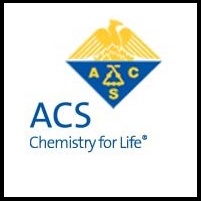دانلود ترجمه مقاله تاثیر کلسیم و روش های برداشت بر فیزیولوژی پس از برداشت گوجه فرنگی
|
دانلود رایگان مقاله انگلیسی + خرید ترجمه فارسی
|
|
| عنوان فارسی مقاله: | تاثیر کلسیم و روش های برداشت بر فیزیولوژی پس از برداشت گوجه فرنگی |
| عنوان انگلیسی مقاله: | Effect of Harvesting Method and Calcium on Post Harvest Physiology of Tomato |
| مشخصات مقاله انگلیسی (PDF) | |
| سال انتشار مقاله | ۲۰۰۶ |
| تعداد صفحات مقاله انگلیسی | ۵ صفحه با فرمت pdf |
| رشته های مرتبط با این مقاله | کشاورزی |
| گرایش های مرتبط با این مقاله | زراعت و اصلاح نباتات، فیزیولوژی و فناوری پس از برداشت محصولات باغبانی، بیوتکنولوژی و ژنتیک مولکولی گیاهان باغبانی، ژنتیک بیومتری و مهندسی ژنتیک، اقتصاد تولید و مدیریت واحدهای کشاورزی، اقتصاد منابع طبیعی و محیط زیست، فیزیولوژی گیاهان زراعتی و بازاریابی محصولات کشاورزی |
| مجله مربوطه | مجله تحقیقات کشاورزی نپال (Nepal Agriculture Research Journal) |
| دانشگاه تهیه کننده | موسسه کشاورزی و علوم دامی، رامپور، چیتوان |
| کلمات کلیدی این مقاله | کلسیم کلرید، افت وزن فیزیولوژیکی، عمر نگهداری، گوجه |
| نشریه | Nepjol |
| مشخصات و وضعیت ترجمه مقاله (Word) | |
| تعداد صفحات ترجمه مقاله | ۷ صفحه با فرمت ورد، به صورت تایپ شده و با فونت ۱۴ – B Nazanin |
| ترجمه اشکال | ترجمه توضیحات زیر اشکال انجام شده و اشکال و نمودارها به صورت عکس در فایل ترجمه درج شده است. |
فهرست مطالب:
چکیده
مقدمه
مواد و روش ها
pH نکتار میوه
مقدار جامدات محلول کل
اسیدیته ی قابل تیتراسیون
عمر انباری
بخشی از ترجمه:
عمر انباری
عمر انباری گوجه فرنگی به طور معناداری تحت تاثیر روش برداشت و تیمار کلسیم کلرید قرار گرفت. صرف نظر از تیمار کلسیم کلرید، میوه های گوجه فرنگی برداشت شده با ساقه و دارای ماکزیمم عمر انباری ۱۵ روز در مقایسه با میوه های بدون ساقه(۱۲.۹۳) روز بودند(جدول ۲).طول عمر بیشتر و بازار پسندی بهتر نیز در میوه های برداشت شده با ساقه های کوچک توسط سینگ و همکاران گزارش شده است(۱۹۹۳).
شکل۱:اثرات متقابل کلسیم کلرید و روش های برداشت روی عمر انباری گوجه
تیمار های کلسیم به طور معناداری بر عمر انباری گوجه تاثیر گذاشت. همچنان که غلظت کلسیم افزایش پیدا کرد، عمر انباری میوه ها نیز افزایش پیدا کرد. ماکزیمم عمر انباری ۱۶.۵۰ روز در گوجه های تیمار شده با کلسیم کلرید ۱ درصد در مقایسه با شاهد(۱۱ روز) مشاهده شد. این نتایج با نتایج ویلس و ترمازی ۱۹۸۲ هم خوانی دارد.تیمار کلسیم می تواند موجب افزایش عمر انباری و کاهش وقوع اختلالات فیزیولوژیکی و گندیدگی می شود(شارما و همکاران ۱۹۹۶).
اثرات متقابل بین تیمار کلرید کلسیم و روش های برداشت معنادار نبود. با این حال یک روند افزایشی از عمر مفید انباری در هر یک از تیمارهای افزایشی سطح کلسیم در هر یک از روش های برداشت مشاهده شد(شکل۱).میوه های برداشت شده با ساقه و تیمار شده با کلسیم کلرید ۱ درصد دارای بیشترین عمر انباری حدود ۱۷.۵ روز داشت طوری که عمر انباری ۹.۵ روز برای میوه های شاهد چیده شده بدون ساقه وجود داشت.
به دلیل اهمیت غذایی بالا و نیز تولید درامد در نپال، گوجه فرنگی روز به روز در حال جلب توجه بیشتر و اهیمت روز افزون است. تیمار میوه های گوجه با کلسیم کلرید در نسبت ۱ درصد موجب افزایش عمر انباری و به حداقل رساندن افت وزن فیزیولوژیک می شود. میوه های گوجه فرنگی برداشت شده با ساقه می تواند دارای عمر مفید در طولانی مقایسه با گوجه های برداشت شده بدون ساقه باشد.
بخشی از مقاله انگلیسی:
INTRODUCTION Tomato is highly perishable and cannot be stored for longer duration. Due to perishability, farmers are losing a bulk of produce each year. Bistha (2002) have reported upto 50% post-harvest loss of tomato in Nepal. Calcium is relatively divalent cation that readily enters the apoplast and is bound in exchangeable from to cell wall and exterior surface of plasma membrane. Nontoxic even at high concentrations it serves as a detoxifying agent. In the cell walls calcium serves as a binding agent in the form of calcium pectates. Calcium has received considerable attention in recent years due to its desirable effects; particularly it can delay ripening and senescence, reduce respiration, extend shelf life and reduce the physiological disorders (Sharma et al 1996). The shelf life is also affected by stalk. Pathak and Shrivastava (1969) have reported the stalk of fruits showed less infection than without stalk fruit upon ripening. Similarly Singh et al (1993) have reported longer shelf life and better marketability of tomatoes having a small pedicel along with calyx. Therefore, this investigation was undertaken to identify the appropriate dose of calcium chloride and compare the storage behavior of tomato harvested with and without stalk. MATERIALS AND METHODS This experiment was conducted during 2003 in Institute of Agriculture and Animal Science, Rampur, Chitwan under Completely Randomized Design (CRD) with three replications. Tomato (Hybrid Gootya) fruits with stalk and without stalk at breaker stage were harvested from farmer field at Bhandara, Chitwan and brought to IAAS, Rampur. Fruits were dipped in distilled water and different concentrations of calcium chloride viz. 0.25%, 0.50%, 0.75% and 1% for fifteen minutes. The fruits were then air-dried and 1.5 kg of fruits was kept on open tray. Each tray was considered as one treatment and ten fruits were numbered (1 to 10) individually for determining physiological weight loss. Physiological weight loss (%) was determined by following formula: Weight loss (%) = [(Initial weight – Final weight) / Initial weight] 100 Titrable acidity was determined by titration method at red ripe stage. It was calculated by following formula: Titrable Acidity (%) = (NB x VB milliequivalent wt. of citric acid 100 d. f.) / Volume of sample Where, NB = Normality of base, VB = Volume of the base, d. f. = Dilution factor. The total soluble solid (0 Brix) was determined by hand refractometer (Model: Erma Japan) in red ripe stage of fruits and pH was measured by automatic pH meter. RESULTS AND DISCUSSION Physiological weight loss Cumulative physiological weight loss of the fruits with respect to harvesting methods and calcium chloride treatments is presented in Table 1. Harvesting method did not influence the weight loss of tomato. Physiological weight loss after 10 days of storage ranged from 15.07 to 15.27%. On the other hand, calcium chloride treatment significantly influenced the physiological weight loss of the fruits right after second days of storage and subsequently afterwards. After 2 days of storage, controlled fruits exhibited 4.2% PWL which was significantly higher than calcium treated fruits. After 10 days of storage, the cumulative weight loss in 1.00, 0.75, 0.50 and 0.25% calcium treated fruits was 12.14, 12.80, 144.86 and 17.02%, respectively as compared to 19.03% in controlled fruits. Interaction effect between method of harvesting and calcium chloride treatment was non-significant. Calcium is the important mineral constituent and it is the constituent of middle lamellae. Softening of fruits is mainly due to weakening of middle lamellae during ripening. Calcium helps to bind polygalactonic acid each other and make the membrane strong and rigid. Calcium treatments have been commercially applied in apple to increase the shelf life and reduce the post harvest disorders (Sharma et al 1996). Thus, calcium might have delayed senescence and rate of respiration and transpiration in tomato fruits. Although statistically non-significant fruits harvested with stalk resulted into lower PWL as compared to those without stalk. A similar result was noted by Singh et al (1993). The reason behind the higher loss associated with the fruits harvested without stalk and stored under ambient condition might be due to more decay loss as exposed surface of stalk or scar left at the time of harvesting creates avenue for the entry of pathogen. Pathak and Shrivastava (1969) have supplied similar explanation. They have also noticed higher decay loss and poor shelf life in mango fruits harvested without stalk. pH of fruit juice pH of the fruit juice with respect to harvesting method and calcium treatment is presented in Table 2. pH of fruit juice harvested without retaining the stalk showed slightly higher pH (4.053) compared to those harvested with stalk (4.018). There was no apparent effect of calcium treatment albeit it was recorded maximum (4.067) in control fruit and that of minimum (4.017) to 0.75% calcium treated fruit. Njoroge and Kerbel (1993) have also reported the significant effect of calcium on pH of fruit juice and it was higher (4.49) in control than that of 0.75% calcium treated fruits (4.47). Since calcium chloride is acidic in nature it might have lowered the pH of the treated fruits.
|
دانلود رایگان مقاله انگلیسی + خرید ترجمه فارسی
|
|
| عنوان فارسی مقاله: | تاثیر کلسیم و روش های برداشت بر فیزیولوژی پس از برداشت گوجه فرنگی |
| عنوان انگلیسی مقاله: | Effect of Harvesting Method and Calcium on Post Harvest Physiology of Tomato |




